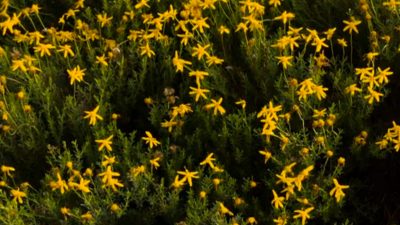How do I solarize? Can I use an old shower curtain or should I use black mulch?
Solarizing is a great way to deal with nematodes, weeds, and even get rid of turf grass. You simply cover an area with plastic, weight it down so that it doesn’t blow away, and let the heat of the sun bake the area underneath.
Nematodes are parasitic round worms that live in the soil and invade the roots of plants. Once you have them, you can never truly be rid of them, but solarizing the soil does knock back the population pretty significantly. After replanting in a solarized area, the nematodes will bounce back, so solarization is really most effective in vegetable beds, where you can solarize the soil between planting seasons. To best keep the nematodes in check, you should solarize at least once a year, for at least a month (or longer if you have a really bad infestation), in early spring.
Clear plastic works best here (like that old shower curtain) since the sun shines through to the soil and creates even more heat under the plastic, due to the greenhouse effect.
Solarizing also works well when trying to get rid of weeds and turfgrass, for example, if you’re trying to remove the grass in order to put in a planting bed or other landscape element. In this situation, it might be better to use black plastic, so that you cut the plants off from sunlight, forcing them to use all of their stored carbohydrates to grow, but leaving them no way to photosynthesize and produce food to replenish the energy that they’re using.
Solarizing works very well on plants with underground storage organs like bulbs, rhizomes, and stolons that are very difficult to get rid of by pulling or even with herbicides. If you are trying to get rid of pernicious weeds, like nut sedge, or nut grass, as it’s more commonly called, or Bermudagrass, solarizing multiple times will be necessary.

 Jackie Davis
Jackie Davis E.E. “Mitch” Mitchamore
E.E. “Mitch” Mitchamore Native and Understory Trees
Native and Understory Trees Daphne Richards
Daphne Richards